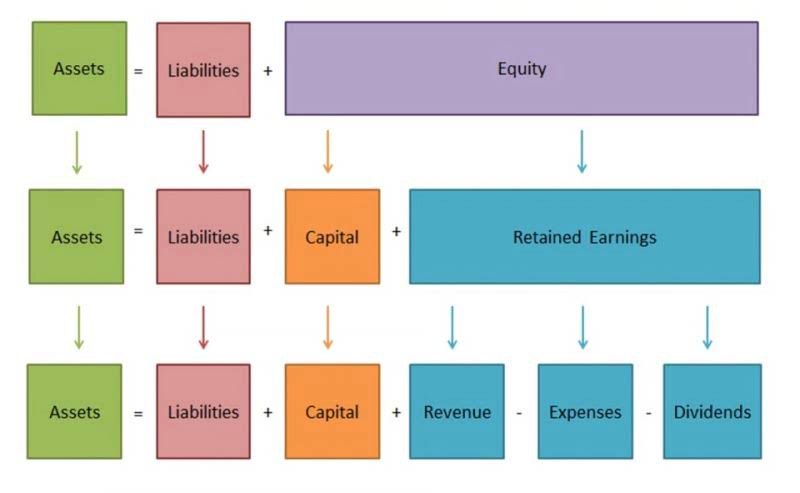
The number is used to calculate many common financial metrics, such as earnings per share (EPS) and market capitalization. Outstanding shares represent a company’s shares that are held by investors, whether they’re individual, institutional, or insiders. Investors can find the total number of outstanding shares a company has on its balance sheet.

Great! The Financial Professional Will Get Back To You Soon.
- This can affect the numbers significantly and possibly change your attitude toward a particular investment.
- However, they stop responding when client demands return of amount invested and profit earned.
- Now the matter of thought is, should we take 1000 shares outstanding as denominator or 2000.
- Specifically, the number of actual shares outstanding must be altered to what it would have been if the split or dividend had occurred at the year’s start.
- The weighted average shares outstanding or WASO adjusts for the impact of any share issues or repurchases during the year.
- Furthermore, by identifying the number of restricted shares versus the number of shares in the float, investors can gauge the level of ownership and autonomy that insiders have within the company.
The inputs you’ll need for this calculation are located on the balance sheet. These statements are available on companies’ investor relations pages or the SEC website. The information is also available on stock data websites like Stock Analysis. Pay 20% upfront margin of the transaction value to trade in cash market segment. A financial professional will offer guidance based on the information provided and offer a no-obligation call to better understand your situation. Ask a question about your financial situation providing as much detail as possible.
Why Does the Number of Outstanding Shares Change?
Treasury shares are shares that had been issued but later bought back by the company as part of any share repurchases. The number of treasury shares held by companies is reported in the treasury https://www.bookstime.com/ stock account. In the financial landscape, outstanding shares represent the total number of shares a company has issued and is currently held by shareholders. Knowing this number is fundamental for various financial analyses and investment decisions. The number of shares outstanding consists of shares held by institutions, restricted shares held by company insiders, and shares available for investors to buy and sell on the open market. Typically, a stock split occurs when a company is aiming to reduce the price of its shares.

Add the Preferred and Common Stock, Then Subtract the Treasury Shares
The number of shares outstanding decreases if the company buys back shares or a reverse stock split is completed. Outstanding shares play a crucial role in determining a company’s market capitalization, a key metric for investors assessing a firm’s overall value. The market cap is calculated by multiplying the current market price per share by the total number of outstanding shares.
- A company may have 100 million shares outstanding, but if 95 million of these shares are held by insiders and institutions, the float of only five million may constrain the stock’s liquidity.
- A company’s shares outstanding are the total number of shares issued by a company.
- Volatility profiles based on trailing-three-year calculations of the standard deviation of service investment returns.
- The most commonly used stock split ratios are 2-for-1 and 3-for-1, meaning shareholders receive two or three additional shares for every share they already own.
- A food distribution company, FoodZilla Ltd has issued a total of 10,000 equity shares.
Outstanding shares can also be used to calculate some key financial metrics, including a company’s market cap and its earnings per share. They are separate from treasury shares, which are held by the company itself. The term outstanding shares refers to a company’s stock currently held by all its shareholders. Outstanding shares include share blocks held by institutional investors and restricted shares owned by the company’s officers and insiders. These shares appear on a company’s balance sheet under Capital Stock. A company’s number of outstanding shares is not static and may fluctuate wildly over time.
- Hence, one can make safer choices and avoid getting trapped in manipulative stocks by knowing about outstanding shares and ultimately avoid blowing their capital.
- Our writers and editors used an in-house natural language generation platform to assist with portions of this article, allowing them to focus on adding information that is uniquely helpful.
- In addition to listing outstanding shares or capital stock on the company’s balance sheet, publicly traded companies are obligated to report the number issued along with their outstanding shares.
- The common stock outstanding of a company is simply all of the shares that investors and company insiders own.
- For instance, a 2-for-1 stock split reduces the price of the stock by 50%, but also increases the number of shares outstanding by 2x.
Shares outstanding is a financial number that represents all the shares of a company’s stock that shareholders, including investors and employees, currently own. Once you know how to calculate the outstanding shares, you can use this number to calculate a number of valuation metrics, or measures of a company’s performance and future https://x.com/BooksTimeInc earnings potential. As we’ve already seen, the number of a company’s outstanding shares can vary over time, sometimes fluctuating a great deal. A company could issue new shares, buy back shares, retire existing shares, or even convert employee options into shares. Once you locate the line item for preferred stock, take note of the total number of preferred shares outstanding. There are a number of different types of stocks that companies issue.
Understanding Shares Outstanding
Outstanding shares of stock is the kind of stock issued by the company that is owned by investors, rather than by corporations themselves. Issued shares is the total number of shares a company can issue in the market. Now that we have built the foundation of how to find number of shares outstanding outstanding shares, let’s understand the formula to calculate outstanding shares. The issue of preference shares or dividends announced to preference shareholders have no effect on this number. You can compare the differences between the figures on specific dates of the filings to find the change in outstanding shares. Companies may issue shares from time to time to fund growth or to reward executives and other insiders, so the number can vary from quarter to quarter.

